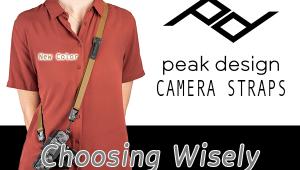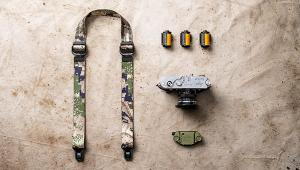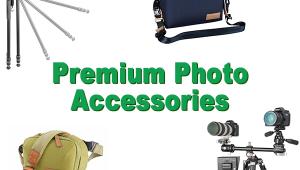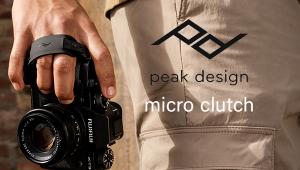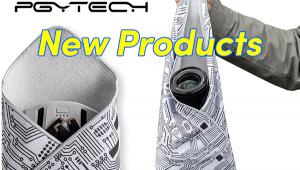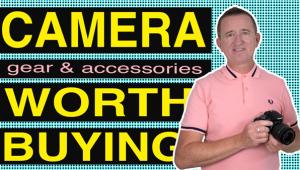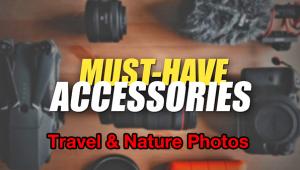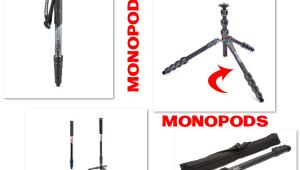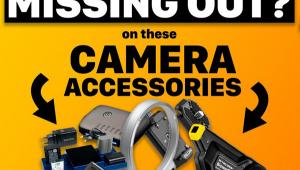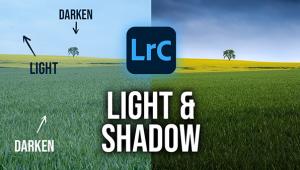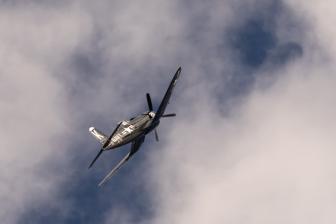Odd Lots: Weird And Wonderful Items: Hey, You Never Know What A Photographer Might Need
The world of photography is a very wide one, and in this report Roger Hicks takes us to the fringes of photographic accessories. While you might well wonder how you might use some of these items, well, you never know!—Editor
It’s a bird! It’s a plane! No, um… it’s um… a camera-carrying helicopter drone. Honest! Though our other favorite in this meandering survey is probably a lot more use to a lot more people. It’s a changing room! It’s a hide for photographing wildlife! It’s a monopod! It’s a light modifier! It keeps the rain off! Or the sun! It’s… um, it’s an unusually versatile umbrella.
In my investigations I found numerous items that were leading competitors in the world of the “weird and wonderful” accessories, including a Spanish camouflage suit that looks like something out of The Curse of the Mummy’s Tomb; an IR-flash auto-triggered camera for wildlife and surveillance from Minox; a magnificent Chinese wildlife hide-cum-tent that folds up into a wheelie backpack; waterproof picture frames (!); a hand-cranked sort-of-movie camera from Lomography; photographs printed on Belgian carpets; an optical/electronic telescope-type rangefinder for large format cameras, with depth of field indicator, from Arca-Swiss; a new Zörk shift adapter; Slovenian picture frames stuffed with coffee beans; a soft, sticky sphere filled with rice, with a tripod screw on top; a microscope camera from Reflecta; and an eight-legged “tripod” (well, camera support, anyway) that looks very like a tarantula.
’Copter Cams
There are new helicopters from an Italian company, Highdrone, and a new Chinese company, DJI Innovations. Highdrone appeared to have the clear advantage, as there was a full-sized Canon D-SLR slung under their helicopter, and their biggest model can lift 11 lbs, while the engagingly named Spreading Wings S800 from DJI Innovations was shown only with a little camera under it. Take-off weight for the Spreading Wings S800 was given as 11 to 14.4 lbs with a load weight up to 5 lbs, 8 oz. If you’re in the market for something this unusual, you presumably have a pretty good idea of what you want/need, so all I can do is leave you to it.
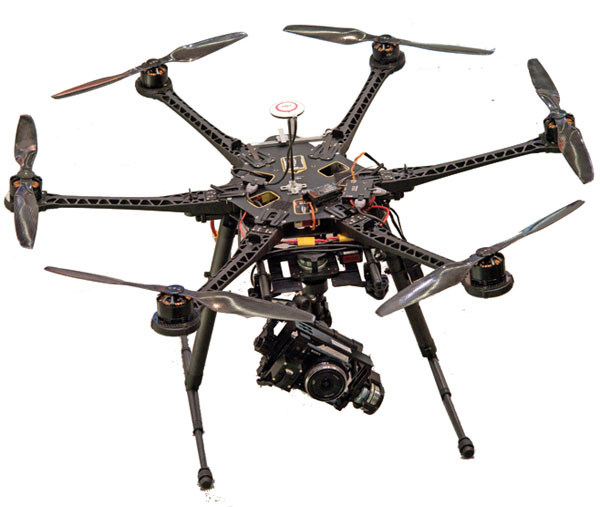
© Roger Hicks Ltd.
Versatile Umbrella
As for the umbrella, the Patron from Novoflex starts out as a heavy-duty umbrella-cum-parasol, made by a leading German umbrella manufacturer, but there’s more! First of all, the handle extends and can be attached to the straps of a backpack using (supplied) clips, allowing hands-free operation with the umbrella spread over you. Or, with the umbrella folded, the extended handle makes a monopod. Or, with the umbrella inside out (which requires a modest degree of brute force) and the handle pointing straight up, it’s a self-supporting monopod: the umbrella may not be rock solid, but you’d need a very high wind before it blows away. Or, with an extension piece on the monopod handle, or a special tripod adapter, and a few tent pegs, it becomes either a location changing room (ideal for swimsuit shoots at the beach, for example) or a hide for photographing wildlife. Two colors of tent are available, tan/sand and olive drab.
With the same tripod adapter, it becomes a light modifier, but not in the obvious way: flat reflectors are stretched across alternate ribs, with the umbrella either right way round or inside out. These may only be the beginnings of its versatility, and although it’s around $130 it looks like a tool for which people will go on inventing new uses. As a spokesman for US importers HP Marketing said, “It’s not often that you see a completely new accessory, with no competition.”

Courtesy of Novoflex
Game Cam And Camp Gear
For wildlife photo fans, the Minox DTC 600 “Game Camera,” also sold as a surveillance camera, is a self-contained, weatherproof, battery-powered 8MP camera with a motion-sensing, adjustable-sensitivity auto-trigger and “black” flash. Put it in the woods, and it will tell you where the deer (and possibly even the antelope) roam. As well as date and time stamps, it has temperature and phase of the moon stamps as well. The black (infrared) flash is touted as invisible to animals and human beings; range is up to about 50 feet; a padlock loop allows you to secure the whole shooting match (as it were) to a tree or other convenient support, and discourages theft; and there’s up to about six months autonomy with fresh, high-capacity rechargeable batteries (10x AA). It takes SD/SDHC cards up to 32GB; it can be password protected; and it weighs just under 13 oz.

© Roger Hicks Ltd.
Assuming you want to take pictures of the animals your DTC 600 has found, you could do worse than to use a Q-Yield Scout, a hide/tent that’s just big enough to sleep in: 86” long at ground level, and a maximum height of about 60”. It comes with a built-in rolling trolley that doubles as a backpack and (short) stepladder, and weighs just 22 lbs.
If you can’t live without your favorite art when you’re camping, Q-Yield also offers a completely waterproof picture frame. It’s not hard to imagine situations where this might be useful—some kinds of exhibitions, for example—but it’s somewhat harder to imagine when you, personally, might need one.

© Roger Hicks Ltd.
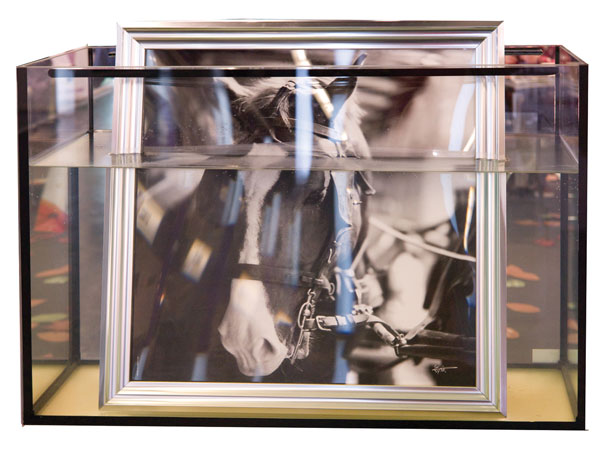
© Roger Hicks Ltd.
Lomography
If you’ve managed to avoid Lomography so far, it is a new religion. The fundamental belief is that you can achieve salvation by taking huge numbers of pictures, on real film, using a modern Chinese copy of a Soviet-era point-and-shoot, and then having cheap prints made. Actually, one can just about see the appeal of it, the whole “living in the moment” thing and the fact that you’ll probably get a few good pictures and quite a number of good snapshots. It helps keep film alive, too. On the other hand, unless you have access to seriously cheap film and processing, it may appeal principally to the financially overprivileged.
Even so, we rather liked the new LomoKino, which is a hand-cranked “movie camera” for taking lots of quarter-frame panoramic shots (about 10x24mm) and making a jerky, dawn-of-cinema sequence of pictures. Admittedly, you have to scan the negatives and then create the movie sequence, too, so maybe you’d also need to have more free time than most of us, as well as the money to blow a whole 36-exposure roll of film in a few seconds. We have absolutely no doubt that it will be used brilliantly and creatively by a very few artists; pretentiously and badly by many more wannabe artists; and, after the first few films, relegated to the shelf by the vast majority of its buyers. To the brilliant and creative artists we’d say, “Buy one quick while it’s available.”

© Roger Hicks Ltd.
Carpeting Images
Belgium is known for its carpets, so it is perhaps appropriate that a Belgian company, FloorPromotion, should have worked out how to print pictures—photographs, graffiti, whatever you like—on various kinds of carpets. The best way to explain the sheer exuberance of the product is to look at a picture of their stand, or perhaps to visit their website.

© Roger Hicks Ltd.
RF Plus
Converging image, laser, and ultrasonic rangefinders are nothing new, but the new rangefinder from Arca-Swiss is another matter. It’s vaguely pistol-shaped, like a spot meter. Look through the eyepiece; focus on a magnified ground glass; and a sensor in the focusing mount measures the degree of rotation and translates it into distance, which reads out on the back of the rangefinder. This isn’t the end of it, though. There’s also software to calculate and tell you the depth of field for a given focal length and distance, and the icing on the cake is that the focusing mount of the Arca-Swiss Rm3d factum camera has a similar sensor and can be set to the same focused distance. It’s a masterpiece of ingenuity and precision, as one expects from Arca-Swiss; it’s well over $1000, also as one expects from Arca-Swiss.
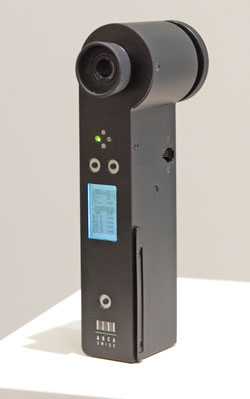
© Roger Hicks Ltd.
A Stitcher
When it comes to ingenious mechanical precision, Herr Zörkendörfer (the company is just called Zörk) can always be relied upon. His most fascinating adapter is a “stitcher” where the lens is held in one place and the camera is moved behind it: up, down, left, right. Stitching together multiple views from shift lenses is nothing new, but as he pointed out, if you move the lens, the perspective changes. Hold the lens still and move the back (or camera) and it doesn’t. The results are certainly very impressive.

© Roger Hicks Ltd.
Fill The Frame
For entertainment value, a wide, clear picture frame that can be filled with coffee beans is hard to beat. The frame itself, that is, not the picture area, so the picture is surrounded by the filled frame. The sample I saw was coffee beans, but it could of course be anything: wheat, pasta… The frames would however have to be sold empty, because otherwise they fall under rules governing the transport of foodstuffs. The frames are manufactured in Slovenia for a Swiss company, Debex.
The same problem would have afflicted the Ballpod if they had stuck with the prototype filling, which was grains of rice. As it was, they spent a lot of time and money to create artificial grains of rice, as rice is the perfect shape and texture. A Ballpod is about the size of a baseball, or a little bigger, but it’s covered with a very grippy plastic and it has a tripod screw on it. What makes it much cleverer than your everyday beanbag is the grippy, almost sticky, covering, which makes it much more stable and less inclined to tip over than any normal beanbag.

© Roger Hicks Ltd.
Microscope Cam
Reflecta, imported by HP Marketing, has a lovely little digital microscope with a built-in camera. It would no doubt be of immense value in education, but it’s so cute that I’d really like one, even though the only use I can think of for it is photographing jewelry, coins, and other very small collectibles for insurance purposes.

© Roger Hicks Ltd.
Arachno-Pod
Last but certainly not least, arachnophobes would do well to avoid a small camera support from Leadwin Photographic. Again, the best way to explain why is with a picture. Eight gruesome bendy legs, just like a spider, and a tripod socket in the middle of its back. If that ain’t weird, what is?
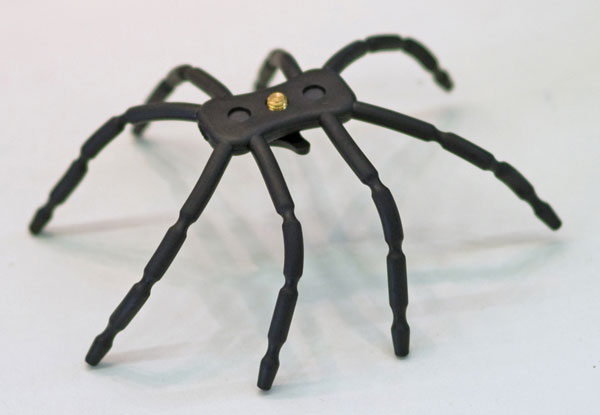
© Roger Hicks Ltd.
To contact any of the manufacturers listed in this article simply type the boldfaced names into a Search engine and you will be brought to their site. If you have any difficulty contact us at editorial@shutterbug.com and we will do our best to connect you.—Editor
- Log in or register to post comments
